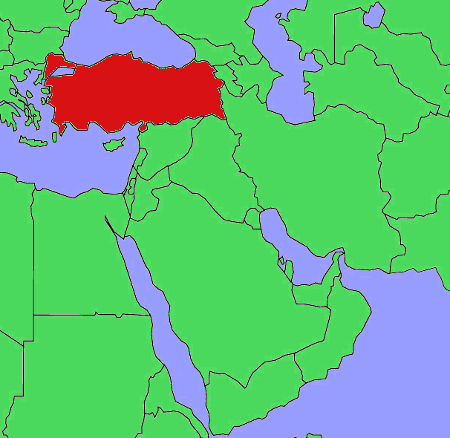
Circle the area on this map

D. A magnitude 7.8 earthquake, followed shortly by a 7.5 quake, was centered in southern Turkey near its border with Syria, a nation already devastated by more than a decade of civil war. Wreckage was widespread in both countries. While there were complaints of slow aid in Turkey, ongoing civil strife severely impeded relief to victims in northern Syria.
B. Erdogan has been president of Turkey since 2014. His government granted an amnesty in 2018 which meant violations of the building code could be swept away with a fine. That left some six million buildings unchanged to resist earthquakes. Assad is the president of Syria; Zelenskyy is the president of Ukraine; and Netanyahu is the prime minister of Israel.
A. Ancient Greeks began settling in what is now Turkey about 1200 BC, and Alexander the Great later conquered the entire area. Turks from Central Asia began moving into the territory in the 10th century. Later, the Turkish Ottoman Empire conquered much of North Africa, the Middle East and Europe, including Greece. Modern Greece and Turkey are still rivals over resources and islands in the Mediterranean Sea.
C. Anatolia, sometimes called Asia Minor, is a large peninsula and the westernmost extension of continental Asia. It is bordered by the Black Sea to the north, the Turkish Straits and Sea of Marmara to the northwest, the Aegean Sea to the west and the Mediterranean Sea to the south.